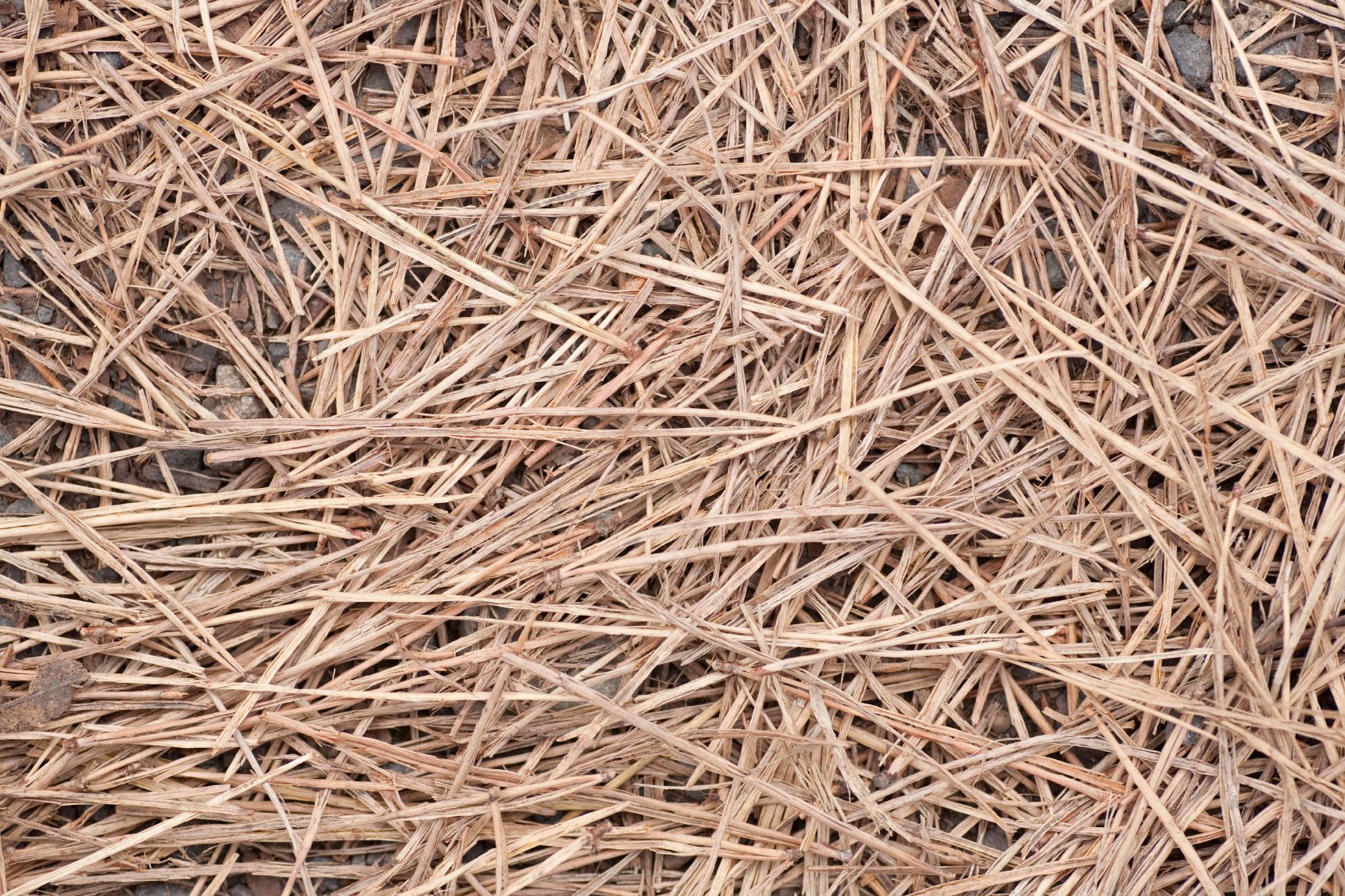Tips On Using Pine Straw For Garden Mulch


Mulching with organic materials helps add nutrients, keep weeds at bay and warm the soil. Is pine straw good mulch? Read on to find out.
Is Pine Straw Good Mulch?
Pine straw is freely available in areas with pine trees and is inexpensive to purchase in bales. Pine straw mulch benefits are plentiful and said to help create ideal conditions for acid-loving plants. Some would argue that they may even help acidify alkaline soils, although this has been highly debated, dependent on your location and current soil conditions. Many gardeners find the constant pine needles under their trees an unsightly mess, but using pine straw for garden mulch is effective for winter protection and a host of other uses. Pine straw is simply the dropped dry foliage from pine trees. You can purchase it in bales from 15 to 40 pounds (7-18 kg.) if you don't happen to have pine trees on your property. It is cheaper than bark mulch by approximately .10 cents per square foot (0.1 sq. m.), plentiful, and more beneficial than bark mulch.
Pine Straw Mulch Benefits
Pine straw mulch is lighter weight than bark mulch. This allows for greater percolation of water and is easy to distribute. So, is pine straw good mulch in comparison to bark mulch? Not only does it increase percolation but it creates a network of needles that help hold down erosion and protect unstable areas. Additionally, it breaks down slower than bark materials, which means its benefits last longer. Once it does begin to compost, the nutrient content in the soil increases. Pine straw mulch benefits also include improving soil tilth. Use a garden fork to mix the needles into the soil to reduce compaction and aid in oxygenation. In addition to these benefits, pine straw mulch uses abound. It is also an attractive natural ground cover around ornamental plantings. It seems to be especially good around acid-loving plants such as hydrangeas, rhododendrons, and camellias. In fall, rake up the needles and place them over spent, tender perennials and other plants that may succumb to winter freezes. A teepee of needles acts as a mini-greenhouse, conserving heat and keeping soil from freezing to protect the root zone from extreme cold. Pull away the needles in spring when using pine straw for garden mulch, so that tender, new shoots can easily penetrate to reach the sun and air.
Pine Straw Mulch Application
The recommended amount of mulch around plants is 2 to 3 inches (5-7.5 cm.) in regular soil and up to 5 inches (12.5 cm.) in dry sandy areas. Around woody plants, keep the mulch at least 3 to 6 inches (7.5-15 cm.) from the trunk to prevent decay. Garden beds may be entirely covered, while other plants should have the mulch 1 to 2 inches (2.5-5 cm.) away from the stems. For pine straw mulch application in containers, use 1 to 2 inches (2.5-5 cm.) to add a nutrient-rich heating blanket for winter coverage. Fall is the best time to apply the mulch for winter protection. Spring applications will help increase tilth, keep heat in the soil and reduce those spring weeds. This cheap, plentiful mulch will have you finding all sorts of pine straw mulch uses in your garden.
Sign up for the Gardening Know How newsletter today and receive a free copy of our e-book "How to Grow Delicious Tomatoes".

Bonnie Grant is a professional landscaper with a Certification in Urban Gardening. She has been gardening and writing for 15 years. A former professional chef, she has a passion for edible landscaping.